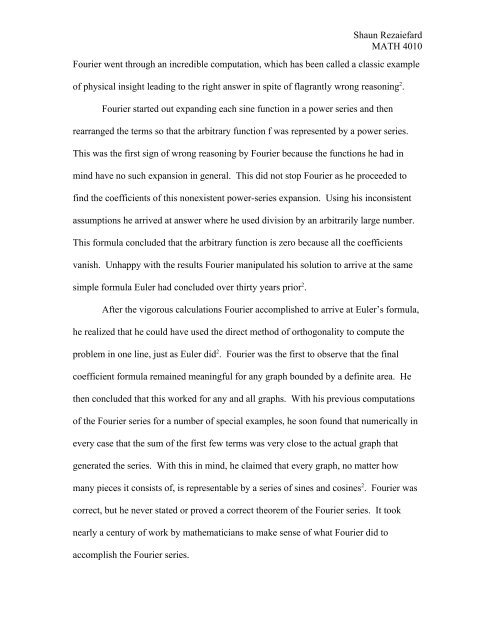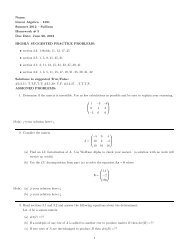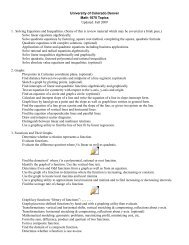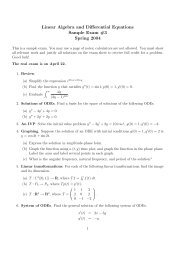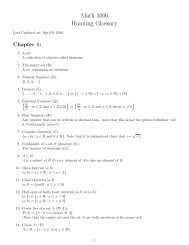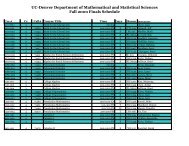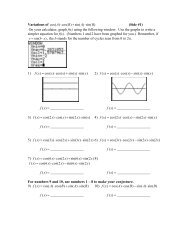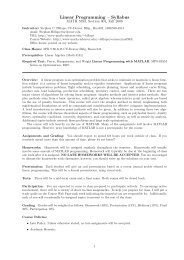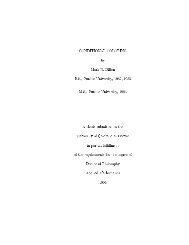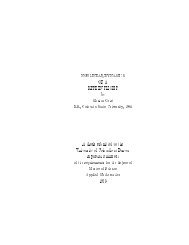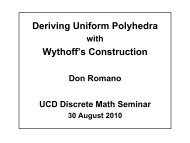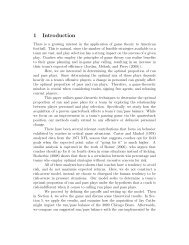Fourier, Jean Baptiste Joseph - Mathematical & Statistical Sciences
Fourier, Jean Baptiste Joseph - Mathematical & Statistical Sciences
Fourier, Jean Baptiste Joseph - Mathematical & Statistical Sciences
You also want an ePaper? Increase the reach of your titles
YUMPU automatically turns print PDFs into web optimized ePapers that Google loves.
Shaun Rezaiefard<br />
MATH 4010<br />
<strong>Fourier</strong> went through an incredible computation, which has been called a classic example<br />
of physical insight leading to the right answer in spite of flagrantly wrong reasoning 2 .<br />
<strong>Fourier</strong> started out expanding each sine function in a power series and then<br />
rearranged the terms so that the arbitrary function f was represented by a power series.<br />
This was the first sign of wrong reasoning by <strong>Fourier</strong> because the functions he had in<br />
mind have no such expansion in general. This did not stop <strong>Fourier</strong> as he proceeded to<br />
find the coefficients of this nonexistent power-series expansion. Using his inconsistent<br />
assumptions he arrived at answer where he used division by an arbitrarily large number.<br />
This formula concluded that the arbitrary function is zero because all the coefficients<br />
vanish. Unhappy with the results <strong>Fourier</strong> manipulated his solution to arrive at the same<br />
simple formula Euler had concluded over thirty years prior 2 .<br />
After the vigorous calculations <strong>Fourier</strong> accomplished to arrive at Euler’s formula,<br />
he realized that he could have used the direct method of orthogonality to compute the<br />
problem in one line, just as Euler did 2 . <strong>Fourier</strong> was the first to observe that the final<br />
coefficient formula remained meaningful for any graph bounded by a definite area. He<br />
then concluded that this worked for any and all graphs. With his previous computations<br />
of the <strong>Fourier</strong> series for a number of special examples, he soon found that numerically in<br />
every case that the sum of the first few terms was very close to the actual graph that<br />
generated the series. With this in mind, he claimed that every graph, no matter how<br />
many pieces it consists of, is representable by a series of sines and cosines 2 . <strong>Fourier</strong> was<br />
correct, but he never stated or proved a correct theorem of the <strong>Fourier</strong> series. It took<br />
nearly a century of work by mathematicians to make sense of what <strong>Fourier</strong> did to<br />
accomplish the <strong>Fourier</strong> series.


